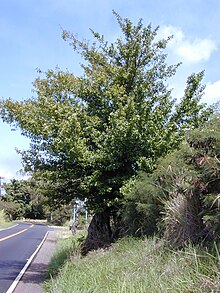Dipholis
| bully trees | |
|---|---|
 |
|
| Sideroxylon persimile | |
| Scientific classification | |
| Kingdom: | Plantae |
| (unranked): | Angiosperms |
| (unranked): | Eudicots |
| (unranked): | Asterids |
| Order: | Ericales |
| Family: | Sapotaceae |
| Subfamily: | Sapotoideae |
| Tribe: | Sideroxyleae |
| Genus: |
Sideroxylon L. |
| Type species | |
|
Sideroxylon inerme L. |
|
| Synonyms | |
|
|
Sideroxylon is a genus of trees in the family Sapotaceae described as a genus by Linnaeus in 1753. They are collectively known as bully trees. The generic name is derived from the Greek words σιδηρος (sideros), meaning "iron", and ξύλον (xylon), meaning "wood."
The genus is distributed mainly in North and South America, but also in Africa, Madagascar, southern Asia, and various oceanic islands. Some species, such as gum bully (S. lanuginosum), S. tenax, and buckthorn bully (S. lycioides), are found in subtropical areas of North America. The only South African species, the white milkwood (S. inerme), is associated with three historical sites, and these individuals were declared national monuments due to their unusual longevity.
Several species have become rare due to logging and other forms of habitat destruction. The Tambalacoque (S. grandiflorum, syn. Calvaria major) of Mauritius was affected by the extinction of the birds which dispersed its seed; it was suggested that the species entirely depended on the dodo (Raphus cucullatus) for that purpose and nearly became a victim of coextinction, but this is not correct. Bully trees provide food for the larvae of certain Lepidoptera, such as the bumelia webworm moth (Urodus parvula) as well as several species of Coleoptera of the genus Plinthocoelium, commonly known as bumelia borers.
...
Wikipedia
